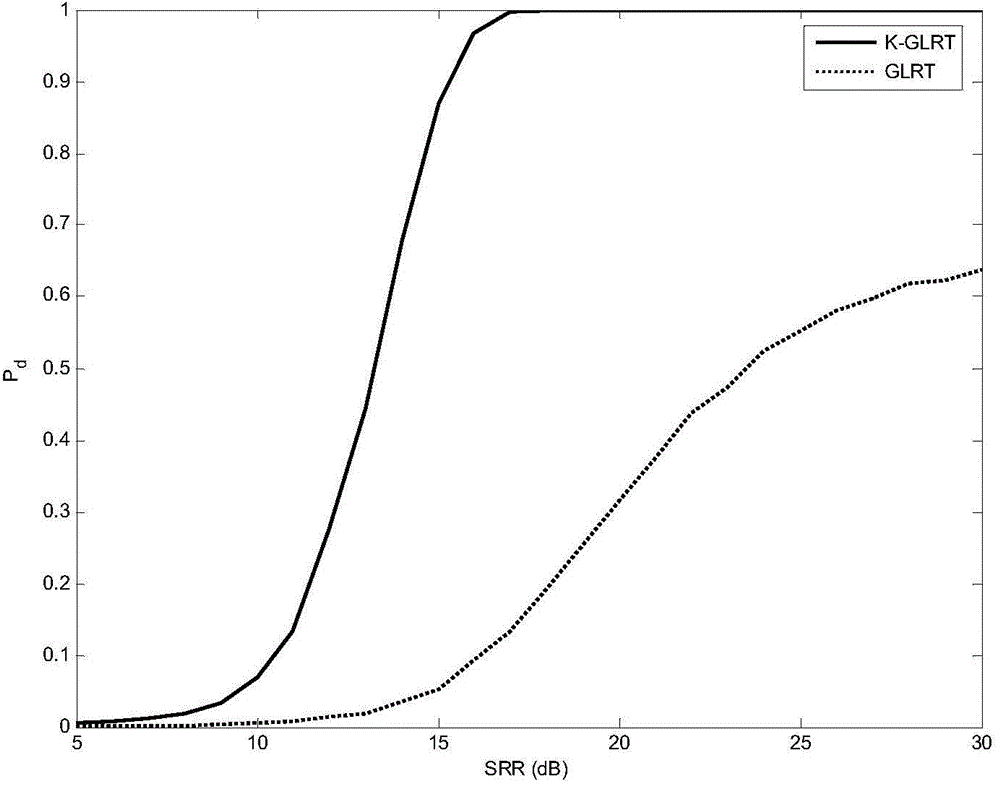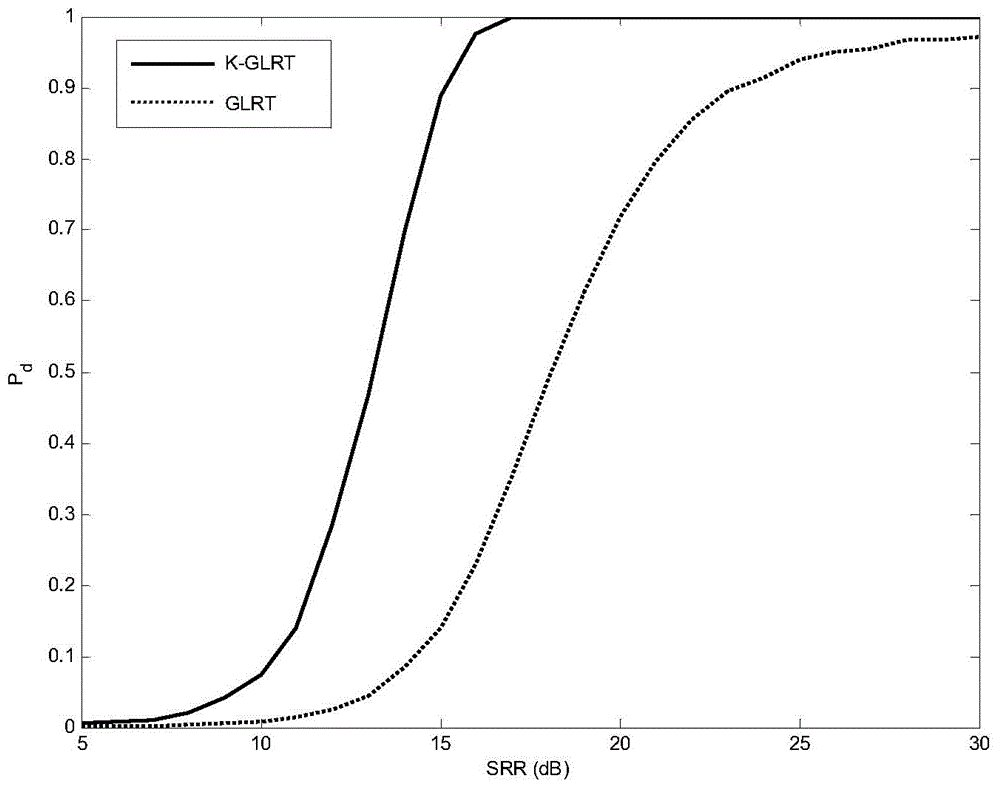Random-covariance-matrix-based multi-highlight target time space detection method
A technology of covariance matrix and detection method, which is applied in the field of signal detection, can solve the problems of limited uniform observation data length, performance degradation of multi-bright spot target detection method, etc., and achieve the effect of improving detection performance
- Summary
- Abstract
- Description
- Claims
- Application Information
AI Technical Summary
Problems solved by technology
Method used
Image
Examples
Embodiment Construction
[0024] The technical solutions of the present invention will be described in further detail below with reference to the accompanying drawings and embodiments.
[0025] In the absence of auxiliary data, the invention assumes that the reverberation obeys the colored Gaussian distribution, and the reverberation covariance matrix M is known, and solves the detection problem through the two-step likelihood ratio test criterion to realize the detection of multi-bright spot targets.
[0026] The specific steps are:
[0027] Assuming that the echo is received by a line array composed of N array elements, the echo data of each array element includes a group of echo data received from K distance units, as the data to be detected, expressed as r t , t∈Ω={1,...,K}. Use the set Ω T ∈Ω represents the index of the distance unit where the target signal is located, and the set Ω T The length is L (L≤K), and L corresponds to the number of target echoes, that is, the number of detected multi-...
PUM
 Login to View More
Login to View More Abstract
Description
Claims
Application Information
 Login to View More
Login to View More - R&D
- Intellectual Property
- Life Sciences
- Materials
- Tech Scout
- Unparalleled Data Quality
- Higher Quality Content
- 60% Fewer Hallucinations
Browse by: Latest US Patents, China's latest patents, Technical Efficacy Thesaurus, Application Domain, Technology Topic, Popular Technical Reports.
© 2025 PatSnap. All rights reserved.Legal|Privacy policy|Modern Slavery Act Transparency Statement|Sitemap|About US| Contact US: help@patsnap.com



